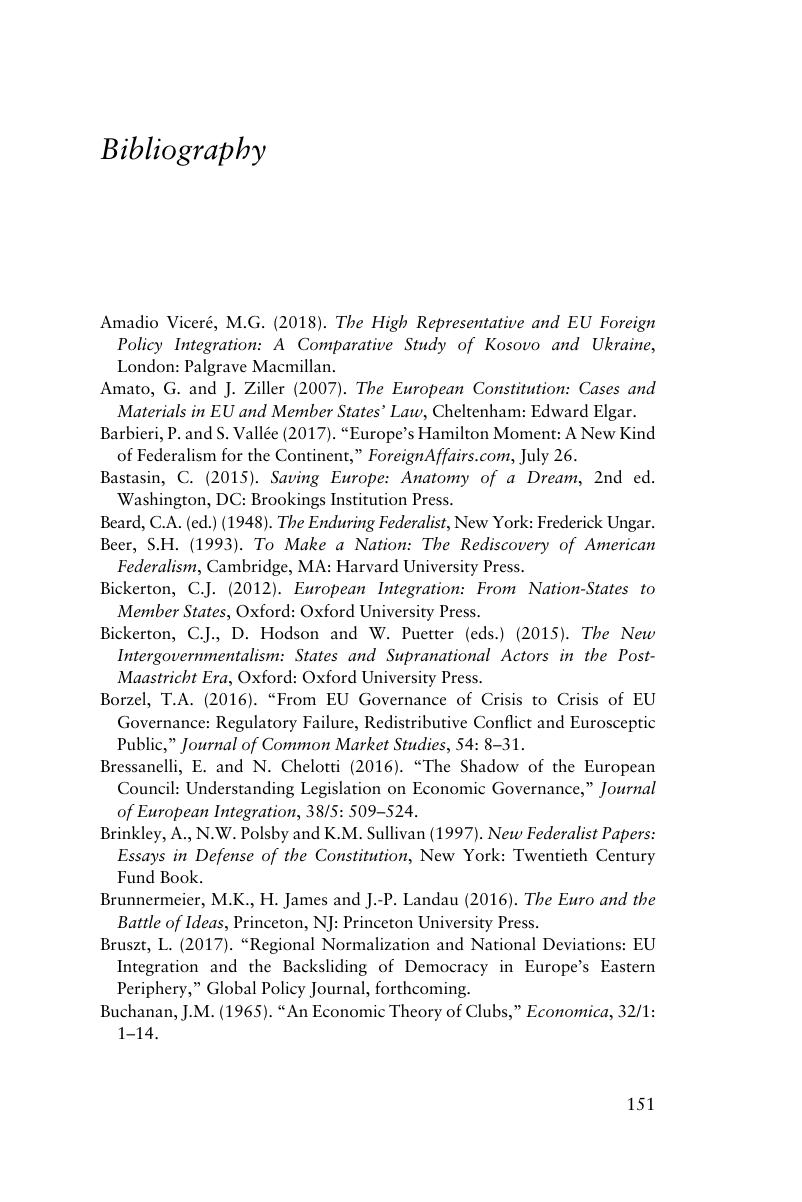Book contents
- Europe’s Future
- Europe’s Future
- Copyright page
- Contents
- Preface
- Introduction: Multiple Crises and European Governance
- 1 Supranational and Intergovernmental Governance
- 2 Intergovernmental Governance and Its Implications
- 3 Sovereignist Challenges and the Political Union
- 4 From Statist to Federal Political Union
- 5 The Future of Europe as Constitutional Decoupling
- Conclusion: Two Organizations in a Plural Europe
- Bibliography
- Index
- References
Bibliography
Published online by Cambridge University Press: 26 February 2019
- Europe’s Future
- Europe’s Future
- Copyright page
- Contents
- Preface
- Introduction: Multiple Crises and European Governance
- 1 Supranational and Intergovernmental Governance
- 2 Intergovernmental Governance and Its Implications
- 3 Sovereignist Challenges and the Political Union
- 4 From Statist to Federal Political Union
- 5 The Future of Europe as Constitutional Decoupling
- Conclusion: Two Organizations in a Plural Europe
- Bibliography
- Index
- References
Summary

- Type
- Chapter
- Information
- Europe's FutureDecoupling and Reforming, pp. 151 - 162Publisher: Cambridge University PressPrint publication year: 2019



